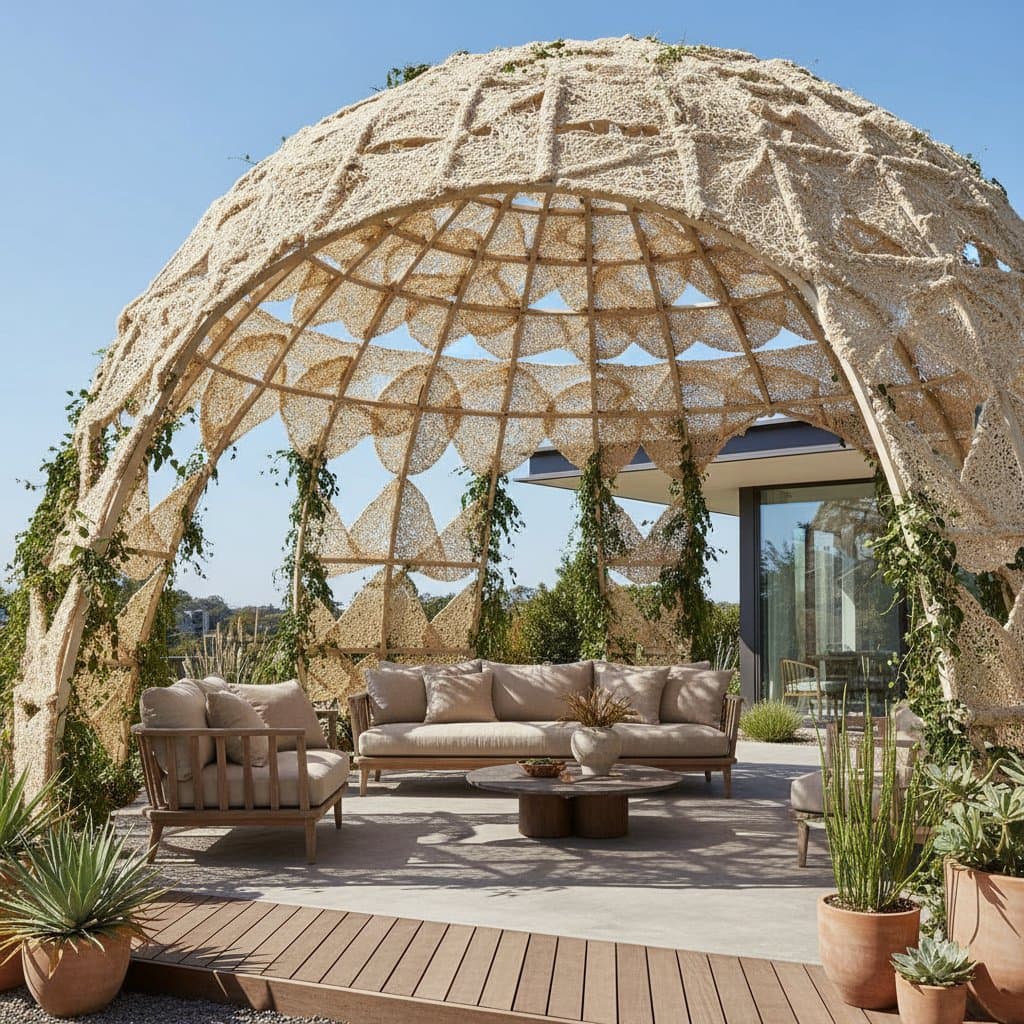Source materials from certified eco-suppliers. Verify that sealants meet low-VOC standards to preserve the material's natural properties.
Preparing the Foundation
Clear the site of vegetation and level the ground. Excavate to a depth of 4 inches for gravel base.
Install landscape fabric to suppress weeds. Spread 2 to 3 inches of crushed gravel and compact it firmly. This base ensures stability and promotes drainage.
For elevated decks, set concrete footings or use adjustable post bases. Space supports every 16 inches to accommodate the lighter weight of mycelium.
Building the Frame
Assemble joists on 16-inch centers using galvanized brackets. Ensure the frame sits 1 to 2 inches above ground for airflow.
Secure the frame to footings with appropriate anchors. Use a string line to maintain even height across the structure.
Double-check squareness by measuring diagonals; they should match. This step prevents warping over time.
Installing the Mycelium Boards
Begin at one edge, leaving a 1/4-inch gap from walls or posts for expansion. Pre-drill holes to avoid splitting the material.
Secure boards with two screws per joist, countersinking slightly. Stagger seams for strength, similar to bricklaying.
Cut boards to fit using a fine-tooth blade. Apply oil sealant to cut ends immediately to protect against moisture.
6. Inspect and Adjust
Allow the sealant to dry fully, typically overnight. Examine all connections for tightness and alignment.
Replace any damaged screws or boards promptly. Clear away construction debris with a soft broom.
Test the surface for evenness by walking across it. The deck supports light foot traffic within 24 hours, but wait 48 hours for full curing.
Safety Considerations
Mycelium boards offer impressive strength-to-weight ratios, yet they differ from denser woods. Limit loads to 50 pounds per square foot without reinforcement; consult an engineer for heavier features like pergolas.
Promote ventilation by maintaining open space beneath the deck. Cover vents only during extreme weather to avoid humidity buildup.
Although treated for fire resistance, position heat sources on non-combustible surfaces. Store grills at least 10 feet away when in use.
In regions with heavy snow, clear accumulations promptly to prevent overload. Annual inspections reveal potential issues early.
Common Issues and Solutions
Soft Spots
These indicate moisture retention. Inspect substructure drainage and add permeable fill if needed.
Remove affected boards, dry thoroughly, and reseal before refastening. Improve overall slope if water collects in low areas.
Fading Color
Sunlight naturally lightens the material over time. Refresh appearance with a penetrating oil that includes UV inhibitors.
Apply in shaded conditions for even absorption. This treatment restores depth without altering the biodegradable nature.
Mold Development
Shaded, damp areas invite growth. Clean with a vinegar solution: one part vinegar to three parts water.
Scrub gently, rinse, and dry completely. Enhance airflow by trimming nearby foliage.
Shifting Fasteners
Thermal movement loosens hardware. Retighten with a screwdriver, or upgrade to corrosion-resistant options.
Use screws one size larger if recurring. Pre-drill wider holes to allow for flex.
Noises During Use
Friction from tight fits causes creaks. Adjust gaps to 1/8 inch between boards.
Apply a dry lubricant like graphite powder to rubbing edges. Secure loose joists if vibration persists.
Cost and Timeline Estimates
Expect $20 to $30 per square foot for materials, varying by board thickness and finish. Framing adds $5 to $10 per square foot.
A 120-square-foot deck requires two weekends for a two-person team. Professionals charge 30 to 40 percent more, providing expertise and guarantees.
Reduce expenses with sustainable substitutions: reclaimed wood frames or DIY sealing. Verify base integrity before reusing old foundations.
Invest in quality sealant; it extends service life to 15 to 20 years, offsetting initial costs.
Ongoing Care Practices
Regular sweeping prevents debris accumulation. Monthly rinsing with water removes surface grime without residue.
Steer clear of pressure washers or abrasives, which damage the texture. Opt for soft brushes for stubborn spots.
Biennial maintenance includes light sanding and resealing. Inspect hardware for rust in coastal areas.
In humid environments, elevate edges seasonally for inspection. Maintain clearance from soil or plants to minimize dampness.
Storage Strategies
Protect during off-seasons by relocating furniture indoors. Use breathable covers for in-place items.
For spare boards, elevate on racks in a ventilated shed. Monitor humidity levels below 60 percent.
Avoid stacking directly; this traps condensation. Properly stored, materials retain viability for years.
Professional Installation Guidance
Engage experts for projects over 250 square feet or sloped terrain. They handle permits and structural integrations.
Inquire about experience with bio-materials and eco-sealants. Confirm ventilation protocols in their approach.
Request proof of licensing and past projects. A solid contract outlines timelines and warranties.
Essential Benefits
Mycelium decking conserves resources by minimizing deforestation and plastic use. It supports biodiversity through natural decomposition.
The material provides a comfortable, cool surface ideal for barefoot walking. Customization options allow seamless integration with landscapes.
Families benefit from reduced chemical exposure in play areas. Longevity ensures value in sustainable living.
Next Steps for Implementation
Begin with a modest installation, such as a 4-by-8-foot platform. Observe performance through weather cycles.
Scale up based on needs: designate zones for relaxation or gardening. Select furnishings that complement the organic aesthetic.
Embracing mycelium decking fosters harmony with nature. This choice creates enduring, regenerative outdoor environments.







